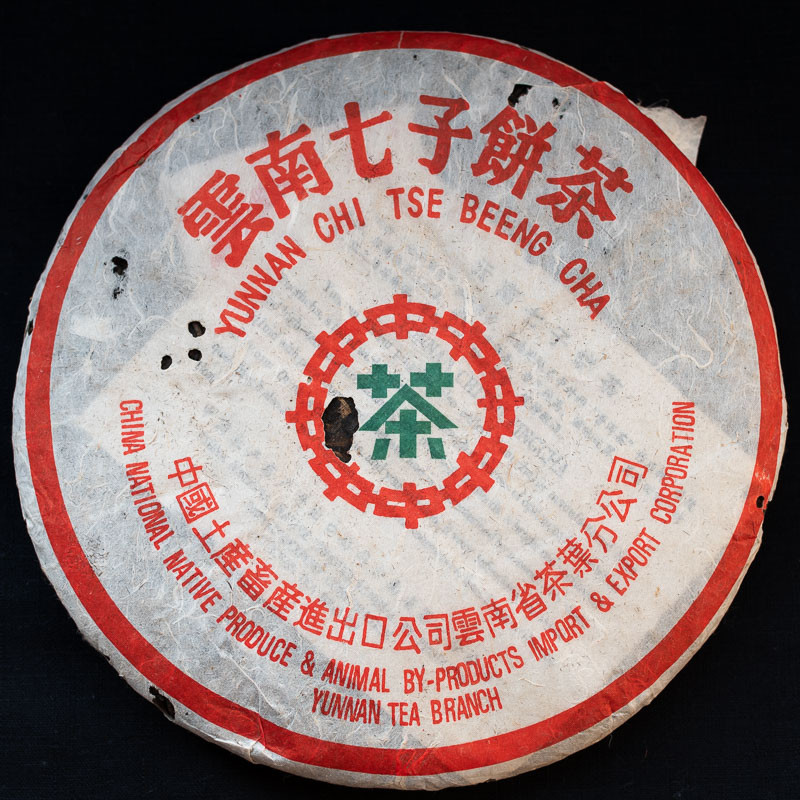Harvested by hand : Spring 2003
Origin: Menghai region, small private factory, but packaged as Menghai Tea Factory.
Process: raw, sun dried, blended and pressed as cake. 8582 style.
Weight of a cake: 357 gram
1. The view
The leaves are rather big, just in the style of the 8582 which this small private company tried to imitate. The dark color of the cake, brew and open leaves are the result of storage in Southern China and Taiwan. The brewed leaves open up completely, which proves that this is indeed a sheng (raw) puerh cake.
2. The scents
Quite amazingly, this batch of cakes smells fresher and younger than the same cake I sourced in 2017. It has much fewer humid storage scents. The fragrances of camphor and old wood feel 'cleaner'. The reason for this difference seems to be the storage location. This batch was forgotten in a remote, countryside warehouse in Taiwan, but it comes from the same source as before.
3. The taste
Similarly, the taste also feels fresher and cleaner. However, since is not a genuine Menghai Factory 8582, it doesn't have its stamina and quality. It is best brewed with short steeps and/or in a gaiwan. However, since a real cake of 1990s 8582 costs over 10,000 USD in China, this is a very affordable daily aged puerh alternative!
Note: This is what I wrote about the same cake in 2017, before it quickly sold out: In 2003, the puerh market was just starting to be liberalized. Due to a lack of marketing knowledge, small tea factories didn't yet establish their own new brands, but simply used existing wrappers to sell their tea. In a time when the tea market was very loosely controlled, this was the easiest way to sell tea for these new players. In 2003, the quality of such fake cakes wasn't necessarily bad. Here, for instance, the leaves are of quite decent quality as they were purchased by a Taiwanese tea merchant who stored them well in a warm and humid region of China (in what is considered a 'dry and clean storage'). The result of this long storage are wonderful aged raw puerh scents. The fresh fragrances have been completely replaced with camphor, wood and earth notes. It's quite amazing how quickly these aged notes have appeared. The taste has smoothened and is good if you make sure not to overbrew it. There are a few tricks I recommend to obtain a good brew: air the leaves a couple of hours before brewing, use more leaves than usual, shorter brewing times and an Yixing zisha teapot. The brew has a light brown color. The open leaves are between dark green and dark brown. This puerh is of excellent value for daily drinkers and those who want to discover the aromas of aged raw puerh.













